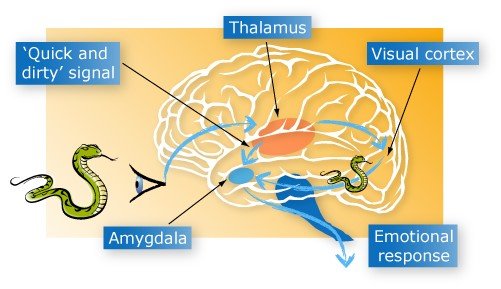Anger vs EQ: Which “You” is in Control?
If you were one of the participants at January 29th’s WAC community event Corporate Emotional Intelligence: Anger in the Workplace, presented by WAC specialist Ginny Brown, you might have found yourself with a peculiar question bouncing around in your mind: Can anger be warranted? In other words, anger— this phenomenon that we all recognize as a trigger of destructive behavior, this transmitter of social turmoil and emotional imbalance in the workplace and in our personal lives, or as Ginny refers to it, “a symptom that indicates a deeper problem”…..can it actually be justified? Well, much of the complex brain science that Ginny introduced us to that evening might point to yes, albeit with a lower-case “y”. And as indicated in my February 3rd post about the event, a glimpse into that science is in order. So, without getting technically intimidating, let’s consider Ginny’s subcortical summations.
Operator, Please Connect Me
Part of a limbic system of human brain components is the thalamus, which is responsible for regulating consciousness by identifying stimuli and then relaying the signals to the appropriate section of the brain for processing. Think of the thalamus as the brain’s switchboard. But, as is often the case with actual switchboards, lines can get crossed, based upon the nature of the stimulus. This is where things get interesting.
Hijacked!
The limbic birth of an angry outburst is a fascinating process, and is thought to have origins in the prehistoric models of our modern brain. First, our eyes, ears or other senses must send the disturbing or distressing stimulus to our thalamus. From the thalamus, a part of the stimulus goes directly to the amygdala (another component of that limbic system, responsible for emotional reaction), bypassing the neocortex (the "thinking brain") before it has a chance to filter the new input. If the amygdala perceives the stimulus worthy to prompt a “fight, flight or freeze” response, adrenaline is instantly released, leading the individual to react destructively to the perceived threat. This “amygdala hijack”, a term and concept introduced to the world by Daniel Goleman in his 1995 book Emotional Intelligence, is thought to be responsible for the irrational outbursts and poor decisions made by competent people in the workplace, at home, in politics, and most notably in sporting events.
The New Challenge
So, we may not always be entirely responsible for our outbursts…..chew on that, Ref! But paired with our knowledge of this fundamental neuroscience is a new responsibility to be mindful (remember that lower-case “y”?). It was, with this outlook, that Ginny’s presentation really demonstrated the significance of EQ. She offered priceless techniques for managing and averting anger within ourselves, and for coping with an ambitious amygdala. One approach is to practice circumventing the internal trigger with a replacement thought; another is to compose a mantra to help you regain control when anger creeps in. Her example, which many of us can relate to, concerned her frustration with evasive computer technology. Instead of feeling defeated and unintelligent (hijack), she simply reminds herself how smart she is in other areas of her life, and hires an IT man to tend to her digital glitches (neocortical).
Also in Ginny’s EQ toolbox are the cues, reminders and strategies that prove most helpful in thwarting anger in chronic cases (and hopefully you know who you are). Have you considered breathing exercises? Changing your perspective? Meditation? Visualization? Counting? Crying? Check in with my next EQ post to find out what all of this means for you, and learn from the educated takeaways offered by the event’s attendees— you will be impressed, and inspired.





